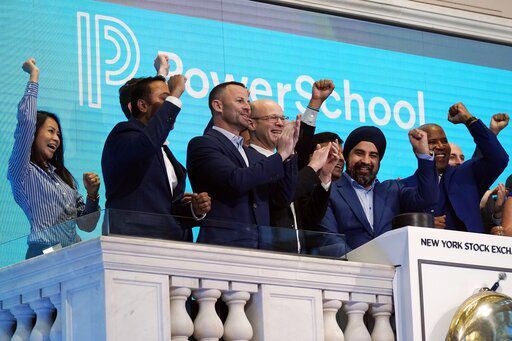Low interest rates and hefty returns have driven record demand for IPOs, but with valuations for newly public companies now at levels last seen during the dot-com bubble, some analysts are raising concerns that the boom may be nearing an end.
Last quarter was the U.S.’s biggest for initial public offerings in over two decades, with 115 companies raising proceeds of $40.7 billion, according to Renaissance Capital. IPOs also set a record in the first quarter.
In 2020, companies raised $61.9 billion, the most since 2000, according to a measure by Jay Ritter, a finance professor at the University of Florida.
This demand has driven valuations to levels not seen since the dot-com bubble two decades ago. In 2020, investors valued IPOs at a median of 38 times the company’s revenue, close to the nearly 41x valuation seen in 2000, according to Ritter. Those valuations have begun to drop in 2021, but remain historically high.
Enthusiasm from companies and investors drove the number and overall proceeds higher in the first half of the year, but returns are slipping and that could further temper pricing for IPOs
The IPO market took off partly because historically low interest rates made stocks an attractive investment, even as the pandemic sapped the broader economy. Those low rates can help boost returns for companies going public.
Low interest rates are especially beneficial for technology stocks whose rich valuations are based on high expectations for their future earnings. Technology companies were dominant in the second quarter, with China-based ride-hailing company Didi raising more than $4.4 billion. Mobile gaming company AppLovin raised $2 billion when it went public in April. The tech sector accounted for more than half of the quarter’s billion-dollar IPOs.
The average return for investors on IPOs reached 33.4% and 72.8% during the third and fourth quarters of 2020, respectively. That stimulated demand from investors and interest from companies to go public during the first half of 2021.
“Returns are the fuel that drive the IPO issuance engine,” said Kathleen Smith, founding principal at Renaissance Capital.
“It’s really hard to tell what will happen with these markets, but if investors aren’t making returns they demand better pricing,” Smith said. “We’re seeing a little bit of pricing sensitivity.”
The average return for investors on IPOs remains high but has slipped from late in 2020. The average return reached 13.5% during the first quarter and 39.7% during the second quarter.
Special-purpose acquisition companies, or SPACs, are being hit hardest by investors’ new-found sensitivity over pricing. SPACs go public with the intent of buying a private company, in effect making the purchased company a publicly-traded company without having to go through the IPO process itself.
Only 63 SPACs went public last quarter, raising about $12.2 billion, down from the 298 who raised $87 billion in the first quarter.
Even with investors a bit more cautious about pricing, the IPO market is expected to remain strong through the year, though the pace will likely moderate because of a more volatile market, Smith said.
Thursday’s listing of online brokerage Robinhood is being closely watched as a gauge of further investor appetite for IPOs. It was priced late Wednesday at $38 a share, the low end of its expected range of $38 to $42, raising nearly $1.9 billion in the deal. The company found itself embroiled in this year’s meme stock phenomenon, when retail investors used the platform to drive up share values for seemingly weak companies, like GameStop.


